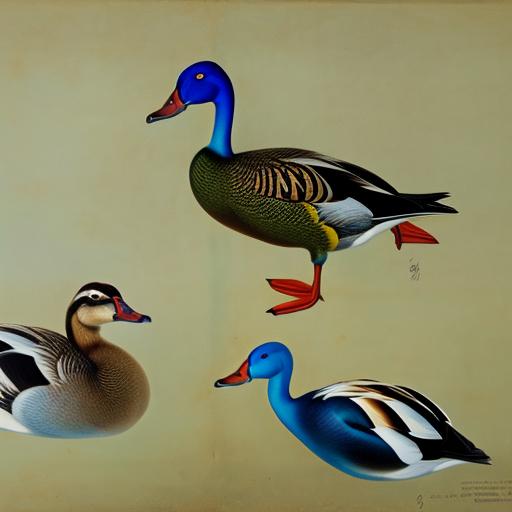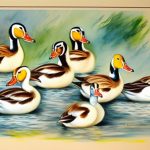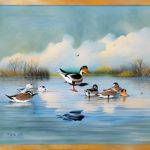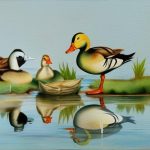Ducks are a diverse group of waterfowl that come in a wide variety of breeds, each with its own unique characteristics and traits. From domestic breeds raised for meat and egg production to wild and ornamental breeds kept for their beauty, ducks have been an important part of human culture and agriculture for centuries. Understanding the different types of duck breeds can help farmers and enthusiasts choose the right breed for their specific needs and preferences.
Duck breeds can be categorized into several groups, including domestic, wild, rare and exotic, ornamental, and breeds specifically bred for egg or meat production. Each group has its own distinct features and purposes, making them suitable for different environments and farming practices. Whether you are looking to raise ducks for their eggs, meat, or simply as pets, there is a breed out there that will meet your needs. In this article, we will explore the various types of duck breeds, their characteristics, and the purposes for which they are commonly raised.
Key Takeaways
- There are many different breeds of ducks, each with unique characteristics and purposes.
- Domestic duck breeds are raised for their eggs, meat, or as pets and include popular breeds like the Pekin and Khaki Campbell.
- Wild duck breeds, such as the Mallard and Wood Duck, are found in natural habitats and are often hunted for sport.
- Rare and exotic duck breeds, like the Silver Appleyard and Cayuga, are prized for their unique appearances and qualities.
- Ornamental duck breeds, such as the Mandarin and Call Duck, are kept for their beauty and as show birds.
Domestic Duck Breeds
Domestic duck breeds are those that have been selectively bred by humans for specific traits such as egg or meat production, as well as for their adaptability to different environments. Some of the most popular domestic duck breeds include the Pekin, Rouen, Khaki Campbell, and Indian Runner. Pekin ducks are known for their large size and white feathers, making them a popular choice for meat production. Rouen ducks, on the other hand, are prized for their beautiful plumage and are often raised for exhibition purposes. Khaki Campbell ducks are excellent layers, producing up to 300 eggs per year, while Indian Runner ducks are known for their upright posture and efficient foraging abilities.
Each domestic duck breed has its own unique set of characteristics that make it suitable for different farming purposes. For example, Pekin ducks are known for their fast growth rate and high meat yield, making them a popular choice for commercial meat production. Khaki Campbell ducks, on the other hand, are valued for their prolific egg-laying abilities, making them an ideal choice for small-scale egg production operations. Understanding the specific traits and purposes of each domestic duck breed can help farmers make informed decisions when selecting the right breed for their farming needs.
Wild Duck Breeds
Wild duck breeds, also known as dabbling ducks, are those that are found in their natural habitats in the wild. These ducks are known for their strong flying abilities and migratory patterns, often traveling long distances in search of suitable breeding and feeding grounds. Some of the most common wild duck breeds include the Mallard, Northern Pintail, Gadwall, and American Wigeon. Mallards are perhaps the most well-known wild duck breed, with their distinctive iridescent green heads and mottled brown plumage. Northern Pintails are known for their elegant appearance and long, pointed tails, while Gadwalls are recognized for their subtle yet striking plumage patterns.
Wild duck breeds play an important role in maintaining the ecological balance of wetland habitats and are also popular among birdwatchers and wildlife enthusiasts. These ducks are often admired for their beauty and grace in flight, as well as their unique behaviors and interactions with other waterfowl species. Understanding the characteristics and behaviors of wild duck breeds can help conservationists and wildlife enthusiasts better appreciate and protect these magnificent birds in their natural habitats.
Rare and Exotic Duck Breeds
Rare and exotic duck breeds are those that are not commonly found in mainstream agriculture or domestic settings. These breeds often have unique physical characteristics or genetic traits that set them apart from more common duck breeds. Some examples of rare and exotic duck breeds include the Silver Appleyard, Cayuga, Saxony, and Swedish Blue. The Silver Appleyard is known for its striking plumage and large size, making it a popular choice for exhibition purposes. The Cayuga duck is recognized for its iridescent green-black feathers that shimmer in the sunlight, while the Saxony duck is prized for its calm temperament and excellent meat quality.
Rare and exotic duck breeds are often sought after by enthusiasts and breeders who appreciate their unique qualities and genetic diversity. These breeds may also play a role in conservation efforts to preserve genetic diversity within domestic duck populations. By raising and breeding rare and exotic duck breeds, farmers and enthusiasts can help ensure the continued existence of these unique birds for future generations to appreciate and enjoy.
Ornamental Duck Breeds
Ornamental duck breeds are those that are primarily raised for their aesthetic appeal and beauty rather than for practical purposes such as egg or meat production. These breeds often have striking plumage patterns, unique coloration, or distinctive physical features that make them stand out from other duck breeds. Some popular ornamental duck breeds include the Mandarin, Wood Duck, Carolina Duck, and Teal. Mandarin ducks are perhaps the most well-known ornamental duck breed, with their vibrant plumage and intricate patterns that make them a favorite among birdwatchers and waterfowl enthusiasts. Wood ducks are also highly prized for their stunning iridescent plumage and graceful appearance.
Ornamental duck breeds are often kept in aviaries or ponds as part of decorative waterfowl collections or as companions to other ornamental birds such as swans or geese. Their striking appearance and graceful movements make them a popular choice for adding beauty and elegance to private estates, botanical gardens, and public parks. By understanding the unique characteristics and behaviors of ornamental duck breeds, enthusiasts can better appreciate and care for these beautiful birds in captive settings.
Duck Breeds for Egg Production
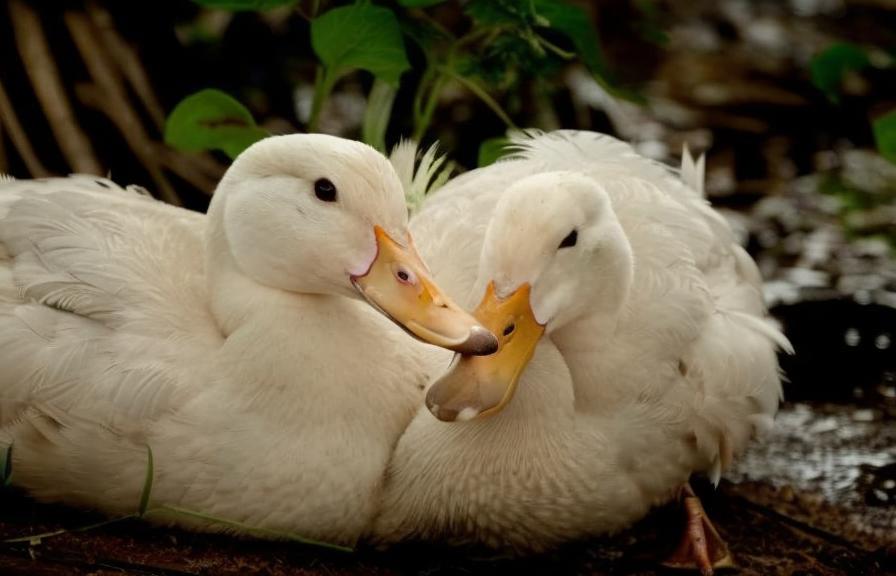
Duck breeds specifically bred for egg production are valued for their ability to lay a high number of eggs throughout the year. These breeds are popular among small-scale farmers and homesteaders who are looking to supplement their income with fresh eggs or to provide a sustainable source of protein for their families. Some of the most popular duck breeds for egg production include the Khaki Campbell, Welsh Harlequin, Golden 300 Hybrid, and Ancona. Khaki Campbell ducks are known for their exceptional egg-laying abilities, producing up to 300 eggs per year with proper care and management. Welsh Harlequin ducks are also prolific layers, with hens laying up to 250-300 eggs per year.
Duck breeds bred specifically for egg production are often chosen for their high productivity, adaptability to different climates, and ease of management. These breeds can provide a valuable source of income for small-scale farmers and homesteaders while also offering a sustainable alternative to chicken eggs. By understanding the specific traits and requirements of egg-laying duck breeds, farmers can make informed decisions when selecting the right breed for their egg production operations.
Duck Breeds for Meat Production
Duck breeds bred specifically for meat production are valued for their fast growth rate, high meat yield, and excellent meat quality. These breeds are popular among commercial farmers and small-scale producers who are looking to raise ducks for meat as a sustainable source of protein. Some popular duck breeds for meat production include the Pekin, Muscovy, Moulard, and Aylesbury. Pekin ducks are perhaps the most well-known meat-producing breed, with hens reaching market weight in 7-8 weeks and drakes in 9-10 weeks. Muscovy ducks are also prized for their lean and flavorful meat, making them a popular choice among gourmet chefs and food enthusiasts.
Duck breeds bred specifically for meat production are often chosen for their efficiency in converting feed into meat, as well as their adaptability to different management systems. These breeds can provide a valuable source of income for farmers while also offering consumers a delicious and nutritious alternative to other types of poultry meat. By understanding the specific traits and requirements of meat-producing duck breeds, farmers can make informed decisions when selecting the right breed for their meat production operations.
In conclusion, ducks come in a wide variety of breeds with unique characteristics and traits that make them suitable for different farming purposes. Whether you are looking to raise ducks for egg or meat production, as ornamental birds or simply as pets, there is a breed out there that will meet your needs. By understanding the specific traits and purposes of each duck breed, farmers and enthusiasts can make informed decisions when selecting the right breed for their specific needs and preferences. Ducks have been an important part of human culture and agriculture for centuries, and by appreciating the diversity of duck breeds, we can continue to enjoy and benefit from these remarkable birds for generations to come.
If you’re interested in learning more about raising poultry, you might also want to check out this informative article on building an A-frame chicken coop. It provides valuable insights and tips for creating a comfortable and functional living space for your chickens.
FAQs
What are the different types of duck breeds?
There are numerous duck breeds, each with its own unique characteristics and traits. Some popular duck breeds include the Pekin, Mallard, Rouen, Khaki Campbell, and Indian Runner.
What are the characteristics of the Pekin duck breed?
Pekin ducks are known for their large size, white feathers, and orange bills and feet. They are commonly raised for meat production and are also popular as pets due to their friendly and docile nature.
What are the characteristics of the Mallard duck breed?
Mallard ducks are known for their colorful iridescent plumage, with the males having a distinct green head. They are a wild breed of duck and are commonly found in ponds, lakes, and marshes.
What are the characteristics of the Rouen duck breed?
Rouen ducks are similar in appearance to Mallards, but they are larger and heavier. They have a distinctive dark green head and a deep, rich plumage. They are often raised for meat production and as ornamental birds.
What are the characteristics of the Khaki Campbell duck breed?
Khaki Campbell ducks are known for their khaki-colored plumage and are excellent egg layers, often producing over 300 eggs per year. They are a popular choice for backyard duck keepers and small-scale farmers.
What are the characteristics of the Indian Runner duck breed?
Indian Runner ducks are known for their upright, penguin-like stance and their ability to run rather than waddle. They come in a variety of colors and are valued for their high egg production and for their pest control abilities in gardens.
Meet Walter, the feathered-friend fanatic of Florida! Nestled in the sunshine state, Walter struts through life with his feathered companions, clucking his way to happiness. With a coop that’s fancier than a five-star hotel, he’s the Don Juan of the chicken world. When he’s not teaching his hens to do the cha-cha, you’ll find him in a heated debate with his prized rooster, Sir Clucks-a-Lot. Walter’s poultry passion is no yolk; he’s the sunny-side-up guy you never knew you needed in your flock of friends!

